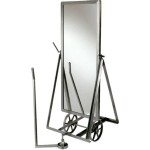How to Mirror iPhone to Apple Computer
Mirroring an iPhone's screen to an Apple computer provides a larger display for various activities, from presenting slideshows to playing mobile games. This functionality leverages built-in features within macOS and iOS, offering a seamless experience for users within the Apple ecosystem. Here's a guide to the different methods for mirroring your iPhone to your Mac.
1. Using AirPlay to a Mac with macOS Monterey or Later
With macOS Monterey and later versions, Apple introduced native AirPlay support to Macs. This simplifies the mirroring process significantly. The Mac essentially functions as an AirPlay receiver, similar to an Apple TV.
To mirror with AirPlay, ensure both the iPhone and Mac are connected to the same Wi-Fi network. On the iPhone, open Control Center. Tap the "Screen Mirroring" button. From the list of available devices, select your Mac. The iPhone's screen will then be mirrored to the Mac's display.
To stop mirroring, access Control Center on the iPhone again, tap "Screen Mirroring," and select "Stop Mirroring."
2. Using QuickTime Player
QuickTime Player, a pre-installed application on macOS, offers another reliable method for mirroring an iPhone to a Mac. This method is particularly useful for recording the iPhone's screen activity.
Connect the iPhone to the Mac using a USB cable. Open QuickTime Player on the Mac. Go to "File" in the menu bar and select "New Movie Recording." A recording window will appear. Click the dropdown arrow next to the record button. Under "Camera," select your iPhone. The iPhone's screen will then appear in the QuickTime Player window.
To stop mirroring, simply close the QuickTime Player window. This method does not inherently mirror the audio, but you can select your iPhone as the microphone input in QuickTime Player to capture audio as well.
3. Using Third-Party Applications
Several third-party applications offer mirroring functionality, often with additional features beyond basic screen mirroring. These applications can provide features like screen recording, enhanced resolution, or improved performance over Wi-Fi. Researching and selecting a reputable application from the Mac App Store is recommended.
The specific steps for using third-party applications vary depending on the chosen software. Generally, these applications require both the iPhone and Mac to be on the same network, and the application must be installed on both devices. Follow the instructions provided by the application developer for proper setup and usage.
4. Mirroring Specific Apps (Reflector)
Some apps, like Reflector, allow you to mirror specific apps on your iPhone to your Mac rather than the entire screen. This offers greater control over what your Mac displays and can be useful for presentations or demonstrations where you only want to showcase one application.
Reflector acts as an AirPlay receiver on your Mac, allowing you to specifically select which app’s content is mirrored. This function depends on individual app development, so not all apps may support selective mirroring.
5. Troubleshooting Connection Issues
If you encounter issues with mirroring, ensure both your iPhone and Mac are connected to the same Wi-Fi network and that the network is stable. Restarting both devices can also often resolve connection problems. For QuickTime Player, check the USB connection and ensure the cable is working correctly.
If the issue persists, refer to Apple's support documentation or the third-party application's support resources for troubleshooting specific error messages.
6. Optimizing Performance
For the best mirroring performance, especially when using AirPlay, keep your devices close to your Wi-Fi router. Closing unnecessary applications on both the iPhone and Mac can free up system resources and improve the responsiveness of the mirrored display.
7. Choosing the Right Mirroring Method
The ideal mirroring method depends on the specific use case. AirPlay is generally the most convenient for quick and easy mirroring, while QuickTime Player provides more control and recording capabilities. Third-party applications can offer advanced features and performance enhancements, but may require a purchase. Consider the specific needs of your task to determine the most suitable method.
Understanding the various options for mirroring an iPhone to a Mac allows for a more efficient and productive workflow, leveraging the interconnectedness of the Apple ecosystem. Choosing the right method for a specific task enhances both presentation capabilities and everyday usability.

2024 Updated How To Mirror Iphone Mac With 5 Methods

How To Mirror Iphone Mac Without Wi Fi

2024 How To Mirror Iphone Display Mac Ios 14 And Big Sur

How To Mirror Iphone Windows Pc Laptop Mac Full Guide

How To Mirror Iphone Mac 2024

How To Mirror Iphone Screen Mac Quick Easy Wireless 2024

How To Mirror Mac Iphone

How To Mirror Iphone Screen Mac Quick Easy Wireless 2024

How To Mirror Multiple Ios Devices Pc Windows Mac

How To Use Apple Airplay Mirror Your Iphone Mac Screen On Tv Roku And More Cnet








